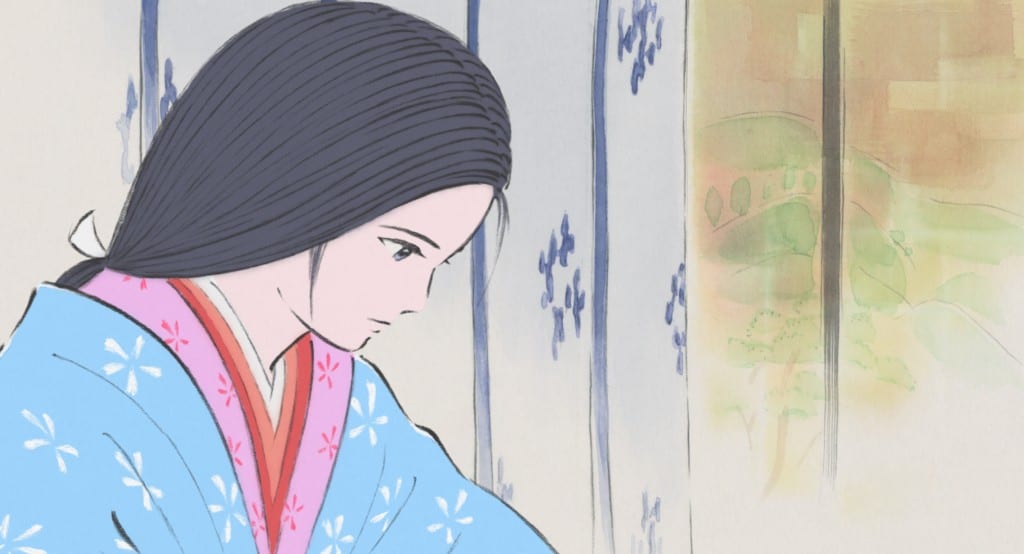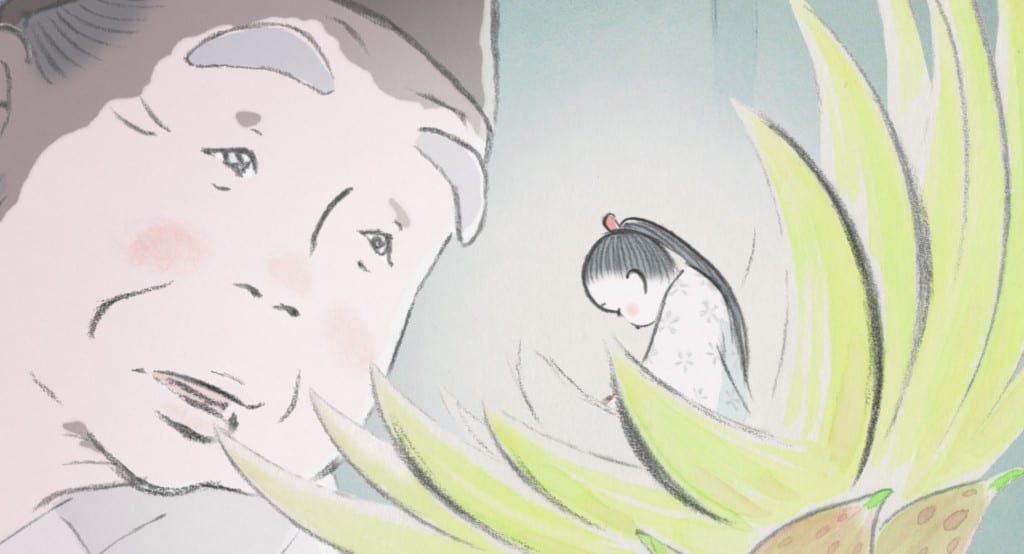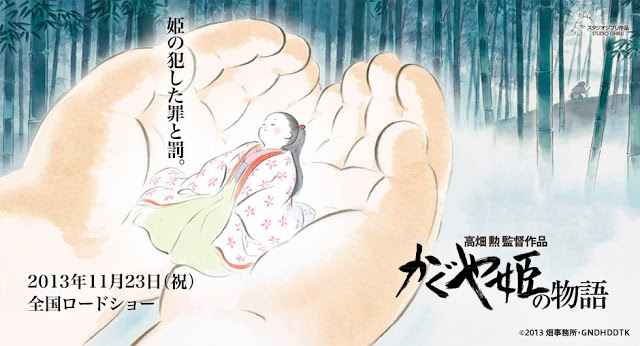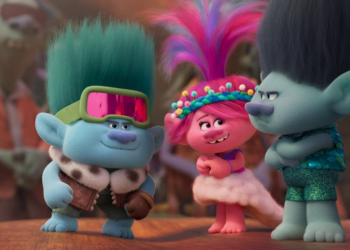
If you are reading this and you’re thinking “Holy moly, why did it take so long for them to release a review on this thing??!!”, let me explain. Full disclosure: Though I have not seen every single Studio Ghibli film there is, I feel a profound and meaningful connection to their work (I’m sure I’m not alone on this). Having grown up with Disney classics, which are great and I still love to this day, I still felt inexplicably unsatisfied. So when I first saw Kiki’s Delivery Service as a kid, I knew I had found something truly special that got me down to my core. Unfortunately for us fans, earlier this year we were hit with the double whammy of all announcements: both Hayao Miyazaki and Isao Takahata would retire upon completing their final films, The Wind Rises, and The Tale of the Princess Kaguya. So, after sobbing it up during The Wind Rises, and watching the trailers for The Tale of the Princess Kaguya I knew it would not be easy for me to watch, especially considering Isao Takahata’s prolific reputation. Now that I’ve had time to digest, I finally feel ready to share my thoughts with the world.
To put my feelings on The Tale of the Princess Kaguya into ear catching, buzz worthy, adjective filled catch phrases would be an injustice to the film. But for those of you who love reading review quotes in trailers or on posters, the film was: breathtakingly beautiful, a profound meditation on the human experience, and something worth waiting for. And wait for it we did as Isao Takahata spent no less than 5 years in production getting everything just right, something which is evident in every frame of the film. But first:

The Story
Okino, a simple bamboo cutter comes across a bamboo shoot that in it contains a tiny girl whom he takes to his wife Ona and they decide to raise her as their own. As she grows sporadically, and drastically, it becomes evident to Okino that this little girl must be a princess, particularly after the Moon presents him with a bamboo stalk filled with gold, and dozens and dozens of beautiful and delicate robes for the princess to wear.
In hopes to make her a proper princess Okino begins to construct a mansion in the city using the gold he was presented with. The princess begins forming friendships with the boys from the neighboring village as they teach her how to climb, and swim, all the while as the situation calls for it, she grows again. When the mansion is finally built, Okino whisks her away to the city, and has Lady Sagami teach her the do’s and don’ts of being a lady of royal blood.
After resisting in the interests of her own desires to live a simple, yet full life, she decides to go forward with the lessons in order to please her father Okino. When the princess reaches womanhood, Okino makes an extravagant coming out party, which leads to the naming priest bestowing her with her formal name of “Kaguya” for the life and light that radiate from her. This is when the real trouble begins, for coming out parties are intended to find ladies a husband, in this case a husband fit for a princess of her caliber. And so, suiters come from far and wide in search of her hand in marriage.

My Feels
What was certain from the beginning of the film is that there would be conflict between Kaguya and Okino as they both search for her happiness, but in two different fashions. Okino desperately tries to give her the life he assumes the Moon gods want for her, Kaguya simply wants to be happy in the simplest of fashions. In this way Takahata beautifully illustrates one of our biggest conundrums in life: How do we keep in mind the people we love while searching for our own happiness? This struggle plays out on center stage all the way through to the end of the film, further demonstrating just how difficult life can be for those of us who are sensitive to this struggle.
The beautiful illustrations further highlight Takahata’s emphasis on the emotional journey of the princess Kaguya. With a beautiful contrast of charcoal and watercolor designs, the most intense moments are complete works of art. The true beauty in the artwork came in how well defined it was. The choices of when the scenes would be more charcoal, and when they would be more watercolor was so deliberate, so as to enhance the emotion of each scene, that you instantly knew what it was that Takahata wanted you to focus on, without detracting from the story or the experience one bit.
This was the first time Joe Hisaishi has ever done the score for a Takahata film, and he did it great justice. The vibrant simplicity of the musical sounds in no way overshadowed, nor underserved the film.
I had the opportunity to watch the film in Japanese with English subtitles, as well as in English dub the following morning, and I’m profoundly glad I did so in that order because it completely changed my understanding of the script and made me appreciate the film in both languages.The Japanese voice acting was spot on. It conveyed exactly what needed to be conveyed, however the English subtitles tended to be much more of a direct translation which leaves a lot to be desired in a cultural context. The reality is that Japanese and English are such different cultures and languages that translating them directly (without the context of emotion or circumstance) can feel a bit cold, a little underwhelming. But that is where the English dub saves the day. The English dub did what the subtitles couldn’t. It added words that conveyed the full weight of circumstance into the picture so you really get the meaning of all of the characters’ journeys. Though most of us were supremely excited to hear what Chloe Grace Moretz was going to be like in the leading role, I have to admit she was not up to par. If it wasn’t for the beauty of the film, the performance of the other voice actors, and the excellent translation, I may not have shed a single tear in the whole film.
Fianal Thoughts
Isao Takahata knew going into this film that this would be his last project. And though he is notorious at Studio Ghibli for taking his time in making the simplest of decisions (he spent 2 hours looking at 3 different options of the promo poster for this film, just as an example), it was nothing but evident why he should take his time with this film particularly as the credits began to roll. As his last film, he wanted not only for it to be perfect, but for it to convey his experiences and life lessons. The film was completely experiential, and though a bit drawn out, I believe you get exactly what Isao Takahata wanted you to get from the film; an exploration of the human experience, the struggle of life to be happy while loving others in contrast to your own desires, and the desire to leave something behind when your time on Earth is over.
The Tale of the Princess Kaguya is still screening in select theaters.







